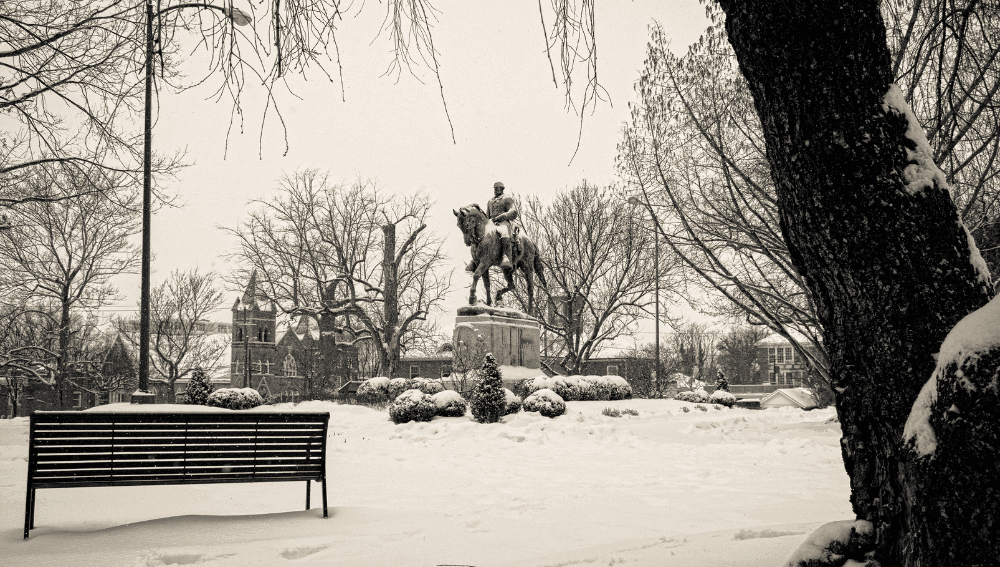"We just want an honest debate," the activists insisted.
"We need to face our history and contextualize it," they claimed.
"They’ll be placed in cemeteries and museums. These are safe spaces for the dead."
A Virginia court clearing the way this week for a museum to melt down the statue of Confederate Gen. Robert E. Lee is just the latest example: the American public has been lied to from the very beginning of the "honest debate" over our monuments.
When all this began approximately ten years ago, activists and their journalists and politicians promised a restrained crusade. When President Donald Trump predicted in 2017 the iconoclasm would move from Confederates to Founding Fathers, he was roundly mocked.
National Public Radio accused the then-president of "whataboutism," writing, "To have the president of the United States compare Lee to Washington is simply, factually wrong."
"The president can raise the slippery slope, but it’s a false slippery slope," Civil War historian Kevin Levin told NBC. The elite’s soothing, mixed with the activists and politicians’ false promises, lulled an American public that’s long revered its history into complacency.
Of course, few slippery slopes are ever false, though it’s an easy claim to make when you know your objective lies downhill. Before Trump left office, mobs would topple statues of Washington, Abraham Lincoln, Catholic saints and even abolitionists; cities would remove statues of Christopher Columbus and Teddy Roosevelt; and the military would begin plans to desecrate burial monuments.
Americans are, generally speaking, a generous people. We care deeply about freedom and justice, and we want to undo historical wrongs where we can, easing suffering both at home and abroad. Activists and their allies took advantage of these impulses. They went even further when George Floyd was killed by a police officer, laying one man’s crime at the feet of all white people alive today, Americans long dead, and the nation itself. Those who had the courage to call out the absurdity of the mob came under withering public attack. Posting so much as a Facebook meme supporting police could get you hauled in front of corporate H.R., and possibly fired.
Drawing on the iconoclasm of her childhood in China, The Federalists’ Helen Raleigh warned, "If Washington and what he stood for can be condemned and humiliated, none of you are safe." As mobs, administrators, politicians and even librarians tore down America’s statuary, the people stood by. In our fear, we comforted ourselves with the lies they told. "They do belong in a museum or the cemetery," we agreed.
Or at least we thought we were agreeing.
Following a deadly riot between white supremacist and hard-left gangs, the Charlottesville City Council commended its statue of Lee and his horse, Traveler, to the care of the Jefferson School African American Heritage Center, which promptly promised to send the century-old masterpiece to the foundry. No one cared that the original sculptor’s most famous work commemorates Union hero Ulysses S. Grant outside the Capitol; historic subtleties are not appreciated by this set.
This statue’s fate is simply more dramatic than that of its fellows, hundreds of which languish hidden from the public in anonymous storage facilities. Its fate is simply more immediate than that of Arlington National Cemetery’s Confederate memorial, which the Department of Defense still intends to desecrate (while politicians in Congress cower).
So what’s next? The museum intends to turn the smelted bronze into new art, its executive director told CNN—"into something that can cause our community to heal." The destroyers always promise new art, and while sometimes a new statue replaces an old, the iconoclasm of the past five years has largely left a wake of vandalized pedestals and empty pillars.
In this sad fact lies the only true thing the revolutionaries and their political and media allies told us. Notice how few of them promised reconciliation—the restoring of friendship and familial relations once frayed and torn. No: they promised a "racial reckoning"—an avenging; a punishment for past errors and sins, real and imagined. There’s no healing in a reckoning, only further pain. Because of this, there’s no real creation either—no truth and beauty, only vengeance. This is what the statue-smashers have been about from the very beginning. It’s time the American public reckons with that.
Christopher Bedford is the executive editor of Common Sense Society.
